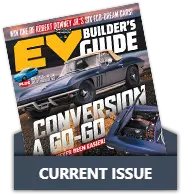Mazda’s Diesel Evolution: Pioneering the e-Skyactiv D Diesel-Hybrid
Mazda Builds The Most Efficient Light-Duty Diesel To Date
Electrification, in one form or another (and for better or worse), is on its way to the automotive world. But instead of ditching internal combustion altogether and diving head first into battery electric vehicle (BEV) technology Mazda is taking a more pragmatic approach. Its new e-Skyactiv D 3.3L inline-six diesel engine will be paired with a 48-volt hybrid system to optimize fuel economy and performance while also lowering tailpipe emissions. We’ve long stated that diesel hybrids are the most logical step toward future low-emission vehicle goals. With proven hybrid technology here already, Mazda’s e-Skyactiv D engine is poised to show the rest of the world just how viable a diesel hybrid will be.
Available in the all-new Mazda CX-60 crossover, unfortunately the e-Skyactiv D option will only be available in European, Australian and Japanese markets, at least for now. But that doesn’t necessarily mean it can never be brought stateside. With fuel efficiency estimates exceeding 44 mpg—in a 4,200-pound CUV, no less—you’re looking at a range of 700 miles per fill up. That’s nearly three times the range of the average EV. Through the use of high-pressure common-rail injection, distribution controlled partially premixed compression ignition (DCPCI), a mild hybrid boost system and modern emissions equipment, Mazda’s e-Skyactiv D promises to deliver one of the cleanest and most efficient diesel packages ever produced.

























CX-60 E-SKYACTIV D
QUICK FACTS
CONFIGURATION: Inline-six
DISPLACEMENT: 3.3L (200 ci)
BORE: 3.39-inch (86 mm)
STROKE: 3.71-inch (94.2 mm)
HORSEPOWER: 251 hp (AWD models), 197 hp (RWD models) at 3,750 rpm
TORQUE: 406 lb-ft at 1,500 to 2,400 rpm
0-62 MPH: 7.3 seconds
TOP SPEED: 137 mph
CURB WEIGHT (EST): 4,200 lbs
WLTP FUEL ECONOMY (EST): 53.3 mpg (AWD), 57.6 mpg (RWD)
EPA FUEL ECONOMY (EST.): 44.3 mpg (AWD), 48 mpg (RWD)
EMISSION STANDARD: Euro 6d











